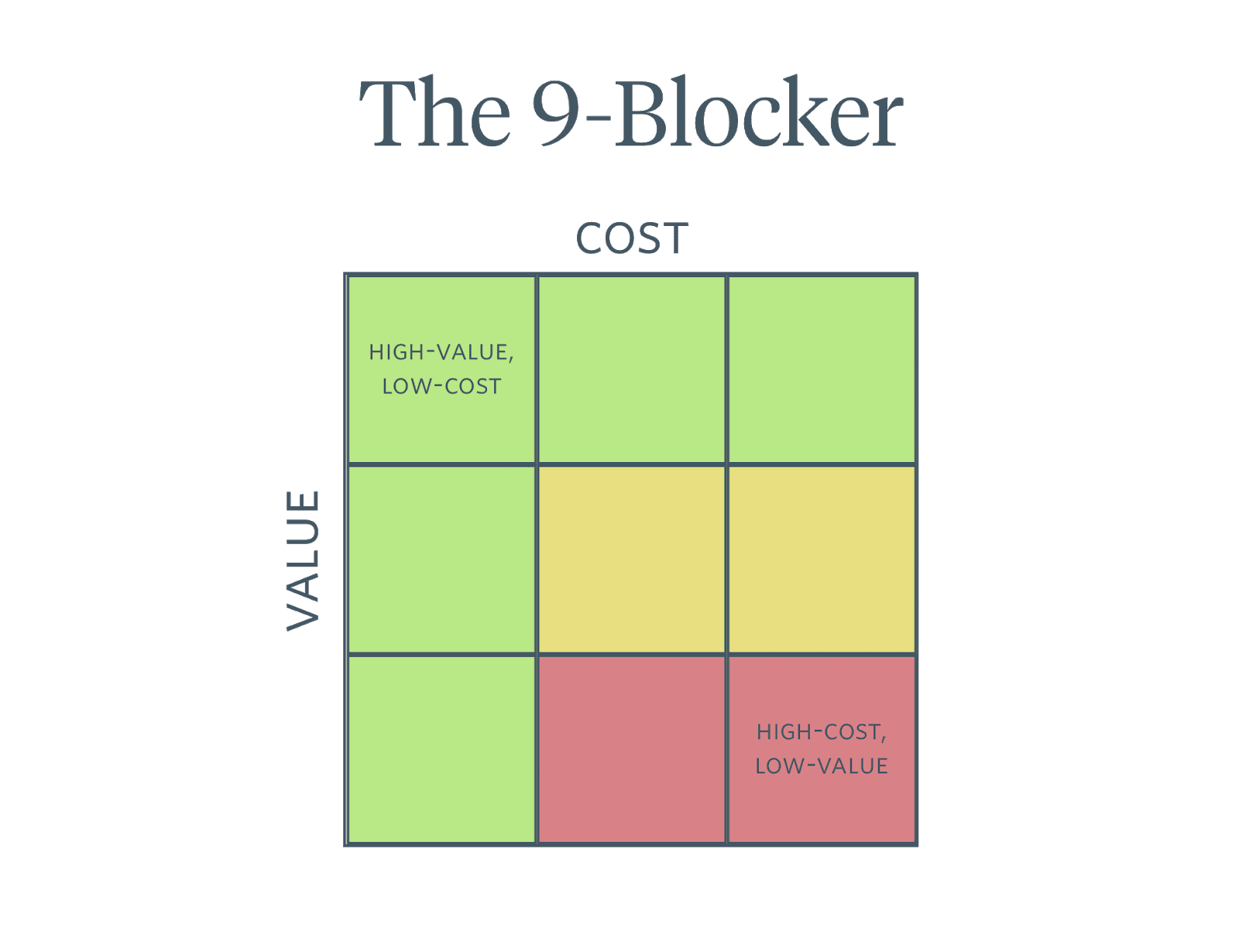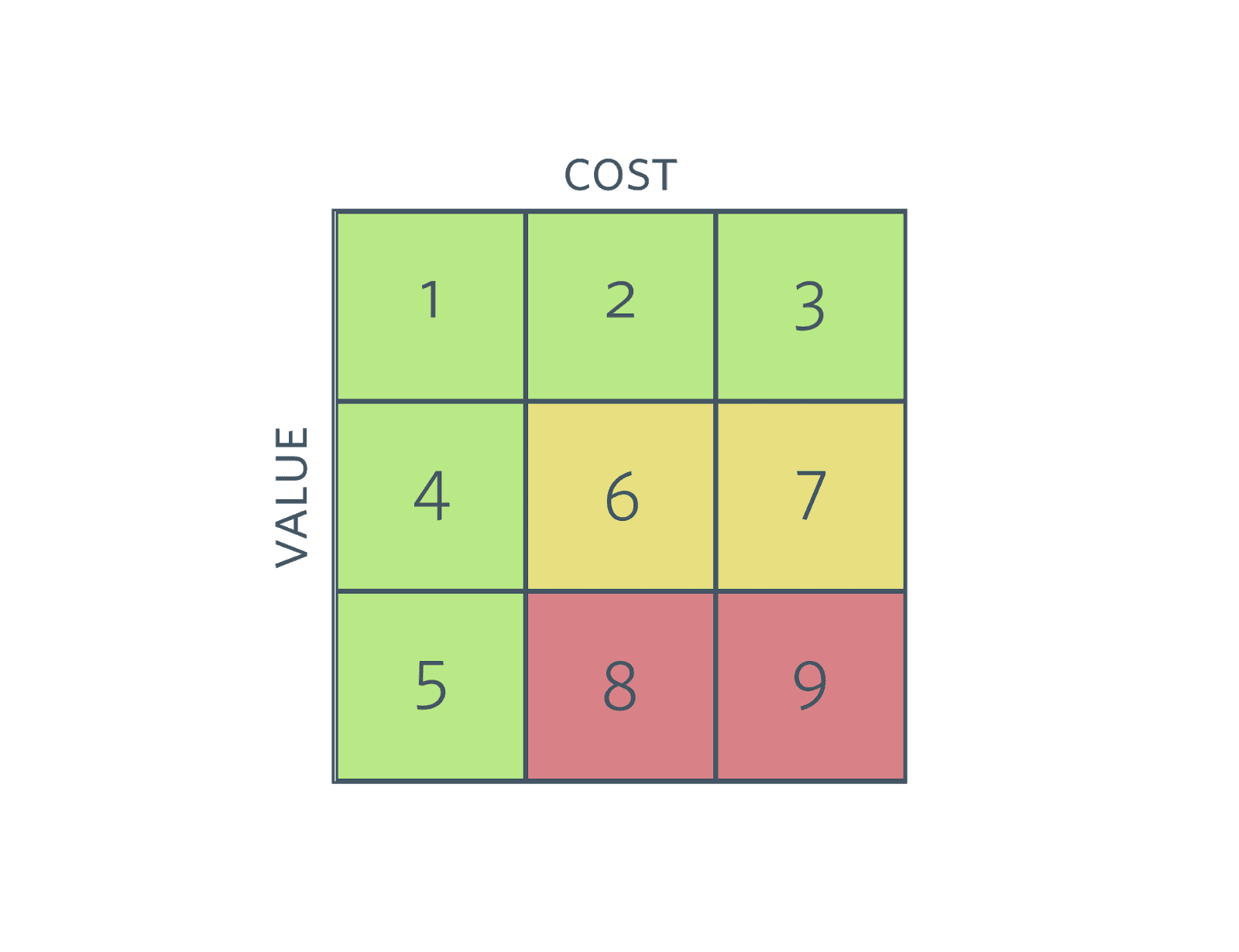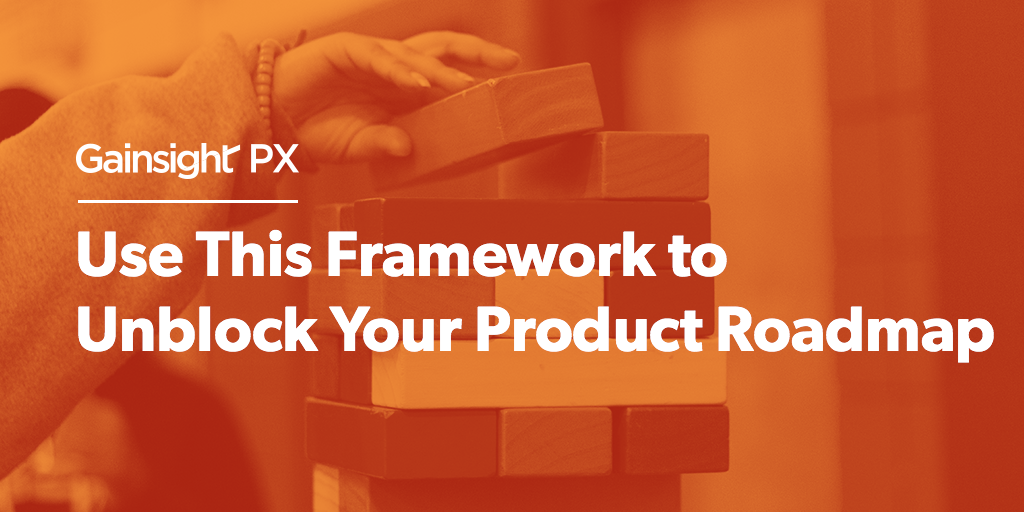We recently had the opportunity to join Gainsight for a webinar about Finding Friction in Your User Journey and How to Fix It.
One of the key aspects of fixing user friction is understanding how to prioritize that work along with things like new feature development.
At FullStory, we’ve landed on a successful process for prioritizing our product efforts called the 9-Blocker and we shared a little bit about this process in the webinar. The 9-Blocker helps us prioritize medium and large arcs of work, and we think it might help you, too.
When in Doubt, List It Out
Each quarter at FullStory we use the 9-Blocker to help us assess our top priorities. Our product management team creates a list of all the product improvements, potential new features, and critical bug fixes that need to be made. The list is compiled from customer feedback received from sales, success, and support teams, as well as opportunities and improvements identified from our internal research and analyses.
Once Product Management knows all the potential work items at play, the real work begins. The 9-Blocker begins with a thorough evaluation of each issue and opportunity that’s based on the relative value and cost of solving each item.
Value
Is the value of the expected output—that is, what is accomplished by fixing an issue or building out a feature—high, medium, or low?
When assessing value we ask questions like:
- How many customers or potential customers does the item affect*?
- Will solving the issue help drive engagement or conversions? And by how much?
- How will the product improvement impact revenue? And by how much?
- Will addressing the issue reduce churn? And by how much?
Cost
Is the cost of doing the work high, medium, or low?
While cost seems fairly straightforward, be sure to take into considering things like:
- How many engineering and design resources will be needed to complete the work?
- How long will it take to complete?
- How will we take the output to market?
- Once launched, who needs to be trained on it? (E.g. sales, marketing, and hugging teams)
Filling in Your 9-Blocker
As you complete the exercise above for each issue and product opportunity, thoroughly document your findings. Once a consensus is reached and value and cost have clearly been determined (high, medium, or low), place each item on one of the 9 blocks on your 9-block table:

As you can see with the 9-Blocker above, value is plotted along the vertical axis and cost along the horizontal.
Try not to get hung up on finding absolute measures for cost and value. You’re really just trying to assess value and cost relative to the other projects being considered. For example, one arc of work may have a high value with respect to revenue opportunities while another might have high value strategically. Ultimately, placement on the 9-block is subjective—which is why thorough evaluation is critical. You want to develop a strong intuition that helps your team defend its priorities and address any questions that may come up later. Doing your homework is critical to making the 9-Blocker useful.
The items that will add the most value to your company go in the top row, while their estimated costs determine which column you place them in.

Here’s how it all comes together:
- High-value, low-cost items will end up in your top left block—your number one priorities. This is your sweet spot, and these are the issues that your team will want to prioritize as most important.
- High-value, medium-cost items land in the top middle block. They will likely be prioritized right behind your number 1 items.
- High-value, high-cost items go in the top right block. These issues may be worth the investment—though sometimes you’d be better served by turning your attention to the medium value, low-cost projects (Block 4).
You get the idea here. Continue to fill out the 9-Blocker with medium value projects going in the middle row and low value projects going in the bottom row. Naturally, low-value, low-cost items will land in the bottom right block.
No Work Left Behind
You may be wondering, when do lower ranking items get prioritized? Does the 9-Blocker mean that only work items on the top row actually get done?
Not at all! As your team lays out the product roadmap for a period of time (quarter, cycle, sprint, etc.), you’ll also be looking at things like which teams have capacity, how much time is available to work on a new item, and what your company goals are at that time. There definitely are cases where it makes sense to do something that’s a 5 versus a 3 because it’s a whole lot less effort (cost).
Getting Buy-In On Your 9-Block
After our product team finishes the 9-Blocker exercise we start shopping it around to the rest of the organization. We run it by our design and engineering teams to get their input. Then we present it to our hugging and marketing teams. Finally, we share it with the whole company.
The goals here are two-fold. First, we want to get as many perspectives as possible. Since value and cost can be somewhat subjective, it’s important to ensure that our relative assessment is stress-tested. Second, once everyone is clear on how and why we’ve chosen our priorities (and has had a chance to weigh in), we can all feel confident we understand and agree with our company goals. Alignment achieved! As a result, it’s clear what each of our responsibilities regarding those goals are as we go into our next cycle of work.
It’s the Artifacts at the Heart of It
What’s so useful about the 9-Blocker approach is that the work (and subsequent documentation) we put in to assess cost and value makes it easy to communicate our priorities to different stakeholders. This reduces the chances of unexpected questions or concerns. Most importantly, this generates clarity and builds confidence across the organization that everyone is working on what’s most important.
If you’re struggling to map out your product team’s priorities, give the 9-Blocker a try. We’ve found it to be an incredibly valuable exercise.
*Understanding the potential impact of a bug or product issue is often a big sticking point in any prioritization exercise. Because FullStory logs and indexes everything that happens in the DOM for each user’s session, it’s exceptionally helpful in understanding the pervasiveness of a certain issue or experience. You can even add a line or two of code and capture anytime a person sees an error message on your site. If you’re not using FullStory in this way, now may be the perfect time to give it a shot!

